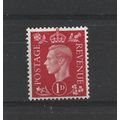Animal - Mule Deer - Canadian postcard c.1970s
- Condition : Used
- Dispatch : 2 Days
- Brand : None
- ID# : 136308711
- Quantity : 1 item
- Views : 172
- Location : United Kingdom

- Seller : justthebook (+1704)
- Barcode : None
- Start : Sun 11 Jan 2015 11:32:53 (BST)
- Close : Run Until Sold
- Remain : Run Until Sold
More Listings from This Seller view all
Seller's Description
- Postcard
- Picture / Image: Mule Deer / Cerf-mulet
- Publisher: Photo Decor, Ganaoque, Ontario
- Postally used: no
- Stamp: n/a
- Postmark(s): n/a
- Sent to: n/a
- Notes / condition:
Please ask if you need any other information and I will do the best I can to answer.
Image may be low res for illustrative purposes - if you need a higher definition image then please contact me and I may be able to send one. No cards have been trimmed (unless stated).
------------------------------------------------
Postage & Packing:
Postage and packing charge should be showing for your location (contact if not sure).
No additional charges for more than one postcard. You can buy as many postcards from me as you like and you will just pay the fee above once. Please wait for combined invoice. (If buying postcards with other things such as books, please contact or wait for invoice before paying).
Payment Methods:
UK - PayPal, Cheque (from UK bank) or postal order
Outside UK: PayPal ONLY (unless otherwise stated) please. NO non-UK currency checks or money orders (sorry).
NOTE: All postcards are sent in brand new stiffened envelopes which I have bought for the task. These are specially made to protect postcards and you may be able to re-use them. In addition there are other costs to sending so the above charge is not just for the stamp!
I will give a full refund if you are not fully satisfied with the postcard.
----------------------------------------------
Text from the free encyclopedia WIKIPEDIA may appear below to give a little background information (internal links may not work) :
*************
The mule deer (Odocoileus hemionus) is a deer indigenous to western North America; it is named for its ears, which are large like those of the mule. There are believed to be several subspecies, including the black-tailed deer.[1][3][4][5][6][7] However, some genetic studies have indicated that mule deer may have developed relatively recently through the interbreeding of white-tailed and black-tailed deer, which may have evolved from white-tailed deer thousands of years ago.[8] Unlike the related white-tailed deer (Odocoileus virginianus), mule deer are generally more associated with the land west of the Missouri River, and more specifically with the Rocky Mountain region of North America. Mule deer have also been introduced to Argentina.[3]
The most noticeable differences between white-tailed and mule deer are the size of their ears, the color of their tails, and the configuration of their antlers. In many cases, body size is also a key difference. The mule deer's tail is black-tipped, whereas the whitetail's is not. Mule deer antlers are bifurcated; they ""fork"" as they grow, rather than branching from a single main beam, as is the case with whitetails. Each spring, a buck's antlers start to regrow almost immediately after the old antlers are shed. Shedding typically takes place in mid-February, with variations occurring by locale. Although capable of running, mule deer are often seen stotting (also called pronking), with all four feet coming down together. Black-tailed deer have also been introduced to Kauai, (Hawaii).
The mule deer is the larger of the two Odocoileus species on average, with a height of 80–106 cm (31–42 in) at the shoulders and a nose-to-tail length ranging from 1.2 to 2.1 m (3.9 to 6.9 ft). Of this, the tail may comprise 11.6 to 23 cm (4.6 to 9.1 in). Adult bucks (male deer) normally weigh 55–150 kg (121–331 lb), averaging around 92 kg (203 lb), although trophy specimens may weigh up to 210 kg (460 lb). Does (female deer) are rather smaller and typically weigh from 43 to 90 kg (95 to 198 lb), with an average of around 68 kg (150 lb).[9][10][11][12] Unlike the whitetail, the mule deer does not generally show marked size variation across its range, although environmental conditions can cause considerable weight fluctuations in any given population. An exception to this is the subspecies, the Sitka black-tailed deer (O. h. sitkensis). This race is markedly smaller than other mule deer, with an average weight of 54.5 kg (120 lb) and 36 kg (79 lb) in males and females, respectively.[13]
In addition to movements related to available shelter and food, the breeding cycle is important in understanding deer behavior. The ""rut"" or mating season usually begins in the fall as does go into estrus for a period of a few days and males become more aggressive, competing for mates. Does may mate with more than one buck and go back into estrus within a month if they do not settle. The gestation period is about 190–200 days, with fawns born in the spring, staying with their mothers during the summer and being weaned in the fall after about 60–75 days. Mule deer females usually give birth to two fawns, although if it is their first time having a fawn, they often only have one.[14] A buck's antlers fall off during the winter, to grow again in preparation for the next season's rut. The annual cycle of antler growth is regulated by changes in the length of the day.[14] For more information see the main article on deer.
Besides humans, the three leading predators of mule deer are coyotes, gray wolves and mountain lions. Bobcats, wolverines, American black bears, and brown bears may prey upon adult deer, but most often only attack fawns or infirm specimens or eat the deer after it has died naturally. Bears and smaller sized carnivores are typically opportunistic feeders, and would pose little threat to a strong, healthy mule deer. [10]
Mule deer consume a wide variety of plants, and their preferences vary widely geographically as well as seasonally, but they are primarily browsers on woody vegetation and eat relatively little grass. They readily adapt to agricultural products and landscape plantings.[15][16] In summer, mule deer chiefly forage on not only herbaceous plants, but also various berries (including blackberry, blueberry, salal, and thimbleberry). They also use grasses more than in winter.[16] Mule deer are known to forage in summer on California buckeye leaves, though it may be toxic.[17][dead link]
In winter, these deer forage on conifers (especially Douglas-fir, cedar, Taxus yews, juniper), and twigs of deciduous trees and shrubs (esp. aspen, willow, dogwood, serviceberry, and sage). In season, they eat acorns and apples. Over much of the species range, snow and ice cover many food sources and the food that is accessible grows slower. The deer's metabolism slows and individuals become less active to survive in an environment with less food. A large fraction of the deaths in a mule deer population occur in the winter, especially during the first year of life.[citation needed]
During the winter, mule deer often move down from mountains, where the snow is deeper and covers most of the food, into valleys with less snow. Sometimes, in response to perceived distress, concerned people create feeding programs. Such supplemental feeding efforts may be harmful if not properly implemented.[18]Supplemental feeding helps mule deer make it through a severe winter if the feeding is started early, long before the mule deer show signs of malnutrition or starvation. To effectively feed mule deer requires a three- to four-month commitment because it has to be started before poor range conditions and severe weather cause malnourishment. It must be continued until range conditions can support the herd.[19]
Mule deer rarely travel far from water or forage, and often bed down within easy walking distance of both. Young generally forage together in family groups; older bucks tend to travel alone or with other bucks. Most actively foraging around dawn and dusk, they usually bed down in protected areas midday, but will also forage at night in more open agricultural areas, during full moons, or when pressured by hunters. Repeated beds will often be scratched level, about the size of a washtub. Temporary beds will seem little more than flattened grassy grounds.[citation needed]
The mule deer can be divided into two main groups: The mule deer (sensu stricto) and the black-tailed deer. The first group includes all subspecies, except O. h. columbianus and O. h. sitkensis, which are in the black-tailed deer group.[3] The two main groups have been treated as separate species, but they hybridize, and virtually all recent authorities treat the mule deer and black-tailed deer as conspecific.[1][3][4][5][7][20] It appears the mule deer evolved from the black-tailed deer.[7] Despite this, the mtDNA of the white-tailed deer and mule deer are similar, but differ from that of the black-tailed deer.[7] This may be the result of introgression, although hybrids between the mule deer and white-tailed deer are rare in the wild (apparently more common locally in West Texas), and the hybrid survival rate is low even in captivity.[6][7] Many claims of observations of wild hybrids are not legitimate, as identification based on external features is complicated.[6]
type=printed
animal subject=deer
period=post-war (1945-present)
postage condition=unposted
number of items=single
size=continental/ modern (150x100 mm)
county/ country=canada
Listing Information
| Listing Type | Gallery Listing |
| Listing ID# | 136308711 |
| Start Time | Sun 11 Jan 2015 11:32:53 (BST) |
| Close Time | Run Until Sold |
| Starting Bid | Fixed Price (no bidding) |
| Item Condition | Used |
| Bids | 0 |
| Views | 172 |
| Dispatch Time | 2 Days |
| Quantity | 1 |
| Location | United Kingdom |
| Auto Extend | No |




 for 1 item(s)
for 1 item(s)

















